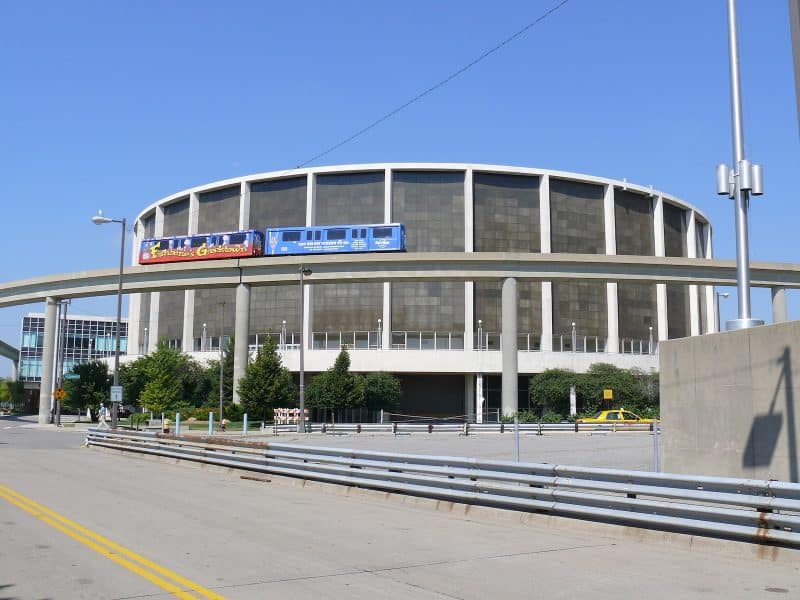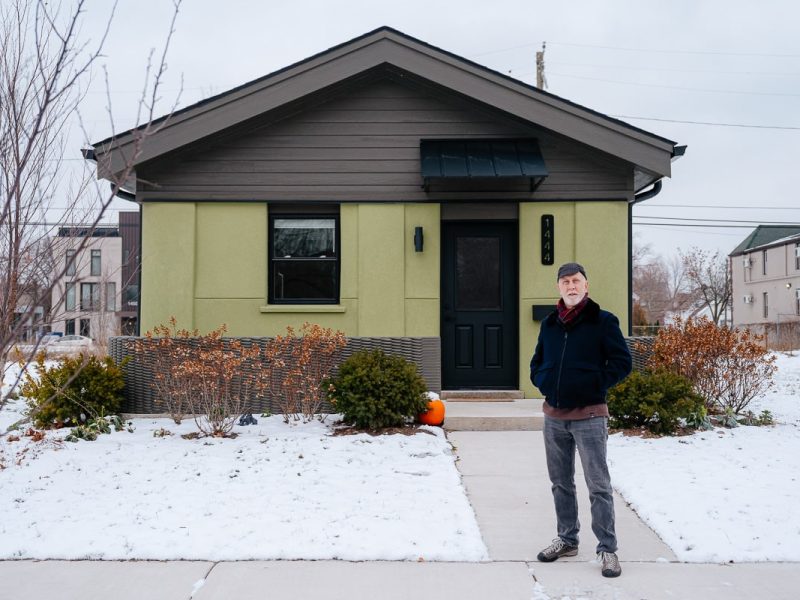Reimagining America’s silliest Interstate: Introducing a series on the future of I-375
Can Detroiters imagine more creative uses for I-375 than those currently proposed? Model D begins a series of three features that dare to dream big about the transformation of America's least useful freeway.

“The building of a highway has about the same result upon vegetation and human structures as the passage of a tornado or the blast of an atom bomb. Nowhere is this bulldozing habit of mind so disastrous as in the approach to the city,” wrote Lewis Mumford in his famed 1958 essay, “The Highway and the City.”
At 1.067 miles long, I-375 is the country’s shortest signed Interstate, yet the disruption it causes to downtown Detroit’s urban fabric is huge. Constructed in 1964, the freeway displaced tens of thousands of Detroiters and businesses, wiping out Black Bottom, the historic cultural and economic center of Detroit’s black community. Today, the freeway is a concrete chasm isolating near-east-side neighborhoods and institutions from the activity and vibrancy of downtown Detroit.
For the last 50 years, I-375 has done one job, at least, admirably: transporting a relatively small number of commuters just a little deeper into downtown Detroit without having to engage with city streets. But in today’s world, one which supposedly values all modes of mobility equally – from cars to pedestrians to bicyclists to users of wheelchairs – I-375 in its current state has become extraneous.
And this piece of extraneous infrastructure is aging, and badly at that. Like so many of Michigan’s roads, I-375 is pocked with potholes, and the bridges that cross over it are failing. Faced with estimated repair costs of $80 million, the Michigan Department of Transportation (MDOT) has finally begun to question the utility of America’s shortest Interstate. MDOT is currently engaged in a partnership with the Detroit Riverfront Conservancy (DRFC) and the Detroit Downtown Development Authority (DDA) to explore alternatives for transforming I-375 in ways that could provide access to all users and increase connectivity between neighborhoods.
“Nothing would do more to give life back to our blighted urban cores than to re-instate the pedestrian, in malls and pleasances designed to make circulation a delight. And what an opportunity for architecture!” wrote Lewis Mumford. These words are as true now as when he wrote them in 1958.
MDOT’s realization presents us, the people of Detroit, with an opportunity that only comes once every half century: to reimagine a space long ago ceded to the tyranny of the automobile as a place for people, one that connects neighborhoods instead of dividing them.
So what would that look like?
On behalf of MDOT, the engineering firm Parsons Brinkerhoff has generated renderings and cost estimates for six potential alternatives for I-375. Three of these would preserve the right-of-way’s character as a limited-access, divided freeway. (These are the most expensive alternatives, costing between $55 and $80 million.) The other three alternatives propose a variety of configurations that would bring the roadbed back to grade and introduce a median rather than a dividing wall, as well as incorporate shared-use paths and areas preserved for future development. (These alternatives are less expensive, with costs estimated between $40 and $55 million.)
On June 12, 2014, these alternatives were presented to the public. Nearly 200 people attended the meeting. (Read about their reactions to the proposed alternatives here.) Since that meeting, however, mum has been the word on the future of I-375. A source close to the process says delays in the project are the result of the Mayor’s office and other stakeholders wanting more input. That person also cites the failure of Proposal 1 as impacting MDOT’s ability to implement any of the proposed changes.
The current delay in the process affords us space to step back before committing to a decision that could affect development and daily life in downtown Detroit for decades to come. While it’s a monumental step for MDOT to reimagine the role of urban freeways (especially as plans to widen I-94 in Midtown progress), we must ask whether the alternatives being considered for I-375 are imaginative enough.
Are we missing an opportunity to engage with local history and contemporary cultural events in Detroit? Are we looking closely enough at examples from around the country and world where freeways have been creatively reimagined as spaces for people?
To answer these questions (and ask a few more), Model D is launching a short series that will explore the potential of reclaiming and reimagining I-375.
Our second piece will look at transportation projects from around the world where freeways have been retrofitted to be more sensitive to their urban contexts. We’ll introduce you to places where communities’ direct actions are leading to creative solutions that better support their health.
Our third piece will ask Detroit a series of simple questions: What if I-375 was reborn as a totally new kind of public place? Can we allow ourselves to imagine the possibility? What if the lights, sounds, and spirit of an event like Movement were to expand into what had been the freeway’s underpasses, ramps, lanes and medians, refashioned for people instead of cars? What if the Movement festival expanded beyond music to challenge the ways we think about movement through the city?
In 1958, just after the passage of the Federal Highway Act, Lewis Mumford warned the world of the dangers of sacrificing precious urban space to the automobile. “It is absurd to make over the city to fit the swollen imaginations of Detroit,” he wrote. “Why should our cities be destroyed just so that Detroit’s infantile fantasies should remain unchallenged and unchanged?”
Today, we have the opportunity to yet again exercise our “swollen imaginations,” this time trading infantile fantasies for mature vision and creating a positive example for the world to follow.
—
Matthew Lewis is Model D’s managing editor. Follow him on Twitter @matthewjlew.





